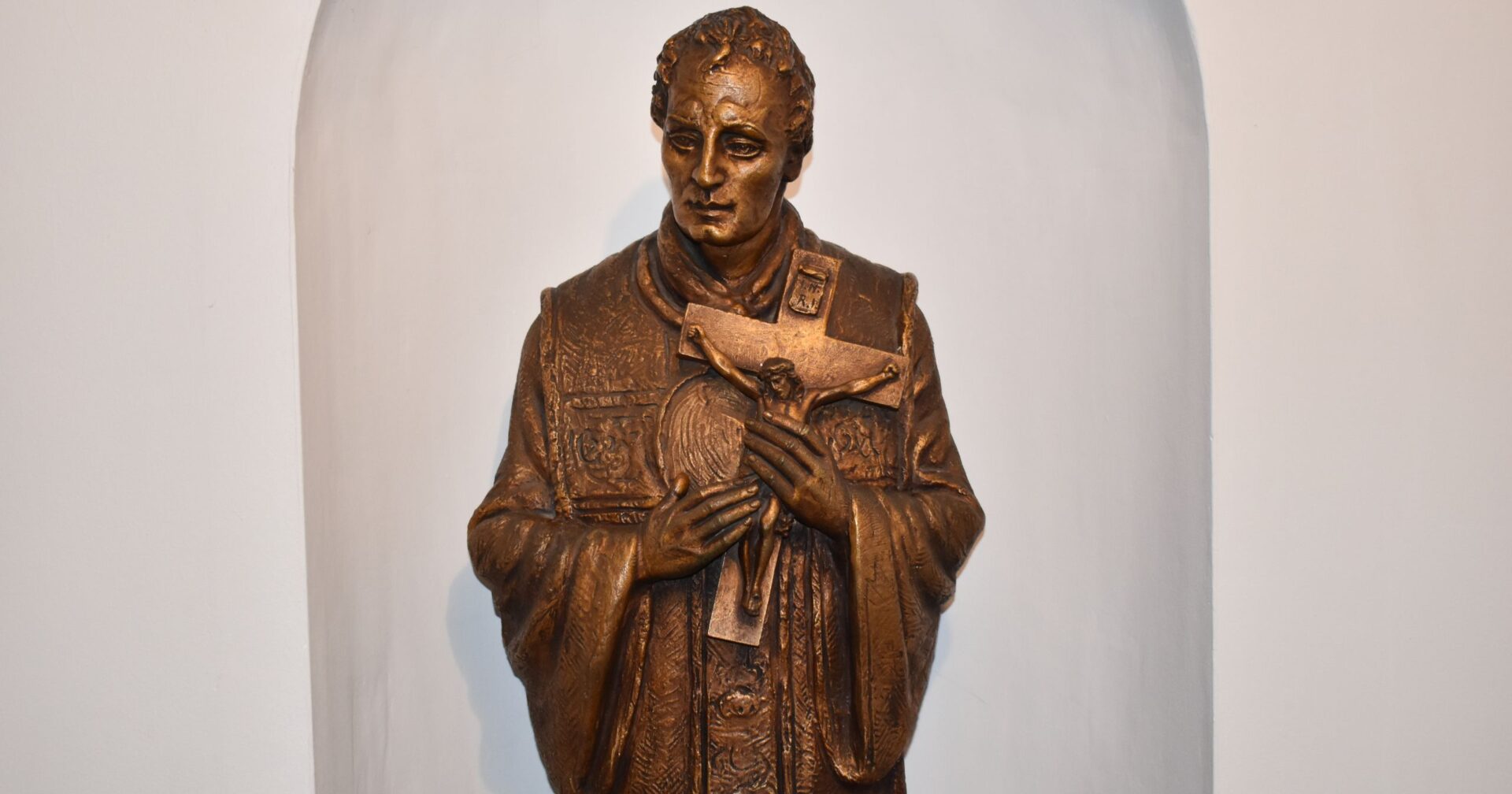Saint Margaret Clitherow, the “Pearl of York,” was martyred while pregnant for protecting priests, pressed to death under the Protestant “Good Queen Bess.”
Born 1556 to a wealthy family in York, England she later wed to John Clitherow, a chamberlain of the city, in 1571 and bore him three children. They lived together in the Shambles, a famous old street in York where overhanging buildings line the road, some dating back to the 14th century.
In 1574 she converted to the Faith despite her husband belonging to the Protestant Church of England; he was supportive as his own brother was a Catholic priest. John paid Margaret’s fines for not attending Church, however despite this she was still imprisoned three times for it.
Margaret risked her life harboring priests, made illegal under Jesuits, etc. Act of 1584 under the supposed “Good Queen Bess.” At first she provided a chamber adjacent to her house, and later in the thick of the persecution, at a rented home farther away where Mass was often celebrated.
When she sent her eldest son to the English College in Reims, France to train for the priesthood, her husband was summoned to explain his going abroad. Their house was searched, and one of her children, frightened by the encounter, revealed a priest hole.
Margaret was arrested for her “crimes” and refused to plead, thus preventing a trial that would force her children to testify under threat of torture. Although she was pregnant with her fourth child, she was sentenced to death on March 25, 1586, the Feast of the Annunciation and Good Friday.
“The sheriffs have said that I am going to die this coming Friday; and I feel the weakness of my flesh which is troubled at this news, but my spirit rejoices greatly. For the love of God, pray for me and ask all good people to do likewise. God be thanked, I am not worthy of so good a death as this.”
She was martyred by pressing, under “Good Queen Bess” execution in such a manner was designed to force a plea. The two executioners, too cowardly to kill the pious woman herself, hired four beggars off the street to do it for them. Protestant onlookers saw the horror of what was about to happen to her under the persecuting government and asked to pray with her, to which she replied:
“Neither shall you pray with me, or I pray with you. On no account shall you answer Amen to my prayers, and neither shall I answer Amen to your prayers.”
Margaret was stripped, blindfolded with a handkerchief, and had a sharp rock placed into her back. The door from her own house where she protected Jesuit priests was then placed on her back and loaded with immense weight. When the executioner tried to get her to confess her crimes, she simply said: “No, no, Mr. Sheriff, I die for the love of my Lord Jesus.” For 15 minutes of agony, she repeated: “Jesus! Jesus! Jesus! Have mercy on me!” before finally succumbing to the torment.
After her death, both her sons became Catholic priests and her daughter a nun at the convent of Saint Ursula’s in Louvain, Belgium. Her final resting place is not known, but her right hand is preserved as a relic at oldest surviving Catholic convent in England, Bar Convent.
Margarent was canonized a saint on the 25th of October in 1970 by Pope Paul VI among the Forty Martyrs of England and Wales. Her feast day is the 30th of the August.
Editorial credit: Neil Bailey / Shutterstock.com


















The fact that she is referred to as Good Queen Bessie speaks volumes about the success of Protestant propaganda (and the effectiveness of her secret police, who could have taught the Gestapo a thing or two).
By all means we should honor the memory of martyrs, but it is also important that we get the history right. Queen Elizabeth I did not sanction persecution of Catholics, even though her more Puritanical advisors kept urging her to crack down harder on them. She didn’t care whether her subjects were Protestant or Catholic, as long as they were loyal to her. Any persecution of Catholics that took place during her reign did so without her knowledge or approval. In fact, she was horrified when she heard about what happened to Margaret Clitherow. In any case, those Catholics who were lawfully executed rather than murdered weren’t the victims of religious intolerance so much as of European power politics.